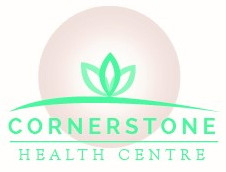Georgetown Chiropractic Care Respects Spinal Extension
Extension of the spine: It is good. It’s bad. So what’s with extension for the spine? Both are accurate: It is good. It is bad. It’s the job of your Georgetown chiropractor to help you determine the role of extension for your Georgetown back pain relief plan and Georgetown back pain control plan in the future. Your Georgetown chiropractor at Dr. Butwell is well versed in the effects – good and bad – of spinal extension and respects its role in spinal health and mobility.
SPINAL CURVES
Two of the spine’s most noticeable curves – the cervical and lumbar curves – are lordotic curves meaning they curve inwardly. Flexion flattens these curves. Extension magnifies them. When a disc herniates or bulges, it does so into the concavity of the curve and potentially pushes on the spinal nerves causing pain. Flexion often allows the disc bulge to move off of the nerve. Extension often permits the disc bulge to press on the nerves more. Dr. Butwell intends to help lessen painful situations like this!
SPINAL MOTION
75% of the flexion and extension movement in the low back happens at the L5-S1 level of the lumbar spine. 20% happens at the L4-L5 level. Therefore, 95% of flexion and extension of the lumbar spine happens at these two lower disc levels. Here, degenerative disc disease (minor and more advanced) occurs most. In the cervical spine, C5-C6 is the spinal level where most of the flexion occurs, and C4-C5 is where most of the extension takes place. Georgetown chiropractic patients need beneficial extension!
SPINAL EXTENSION
Dr. Butwell respects extension and gets how it may benefit and harm. The extensor muscles in the back weaken and degenerate just as discs degenerate. (1) Extension helps strengthen these muscles to support the spine. Extension is necessary for this when the spine is healthy enough to do extension. Extension to a painful spine may hurt. Why? In the cervical spine, flexion reduced disc protrusion and enlarges the sagittal diameter of the vertebral canal while extension made the disc herniation larger and constricted the vertebral canal causing stenosis. (2) In a degenerative lumbar spine with spinal stenosis, flexion opened the vertebral canal and relieved pain while extension exacerbated the stenosis and caused pain. (3) Dr. Butwell understands the key to eliciting the benefits of extension is in knowing when to use extension.
Georgetown CHIROPRACTIC USE OF EXTENSION
Georgetown chiropractic treatment integrates extension into the Georgetown chiropractic treatment plan for its advantages. Cox® Technic applied to the cervical spine reduced intradiscal pressures to as low as 502 mmHg (4) and to as low as -192 mmHg in the lumbar spine. (5) Extension increased pressures in the lumbar spine to 1250 mmHg (the most the transducer could measure). (4) Reducing intradiscal pressures and back pain is what Dr. Butwell does for its Georgetown back pain patients.
CONTACT Dr. Butwell
Listen to this PODCAST with Dr. David Atiyeh on the Back Doctor’s Podcast with Dr. Michael Johnson. He shares how he cared for a patient whose back pain persists after multiple back surgeries with flexion distraction which gives her relief as the table is flexed not extended.
Schedule your Georgetown chiropractic appointment with Dr. Butwell today. Let’s discover the role extension might play in your back pain recovery and future back pain control strategy.

